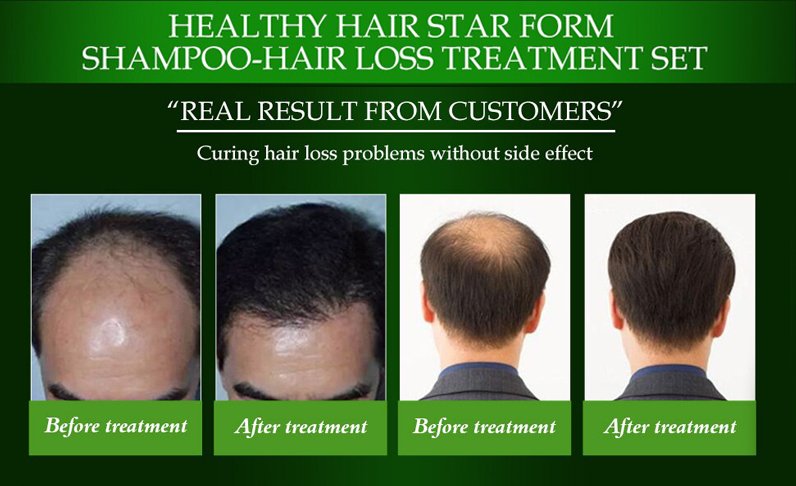You must have read the story of Rapunzel. Who has not? More than the tale of Rapunzel, the readers and storytellers were fascinated by the description that Rapunzel had long, lustrous, shiny, thick hair that made everyone drool about her. And when the girl had to cut her hair so that she could escape from the clutches of the witch, many readers felt sad at the fact that she had to cut her hair.
Well, that was how the story went but for many cutting the hair was not acceptable since Rapunzel was endowed with it and not many are lucky to have such lustrous hair. Still, women try to find ways to have such long hair. We tend to get influenced by such storytelling tactics. But truth be told, hair looks good at any length. However, with long hair, you can do any styling, add layers to it, and even colouring the hair looks good.
Hair loss affects women than men
Well, one accepts a balding man, but for a woman, it becomes a little unacceptable. Every one of us have a picture of a woman with hairs, even if they are not long. Hair loss is accepted more in men than women, though women lose a considerable amount of hair. However, that hair loss irrespective of gender can have a severe emotional impact on women. It can dent the person’s peace of mind, self-esteem, confidence and can adversely affect the overall quality of their life. But in women, the impact is more, in such a way that it can affect their social life and give rise to emotional issues. This in turn negatively affects their social gatherings, diminishing performance at work and home, even changing their daily schedule, and opting for unhealthy lifestyles. All this is due to receding hairs.
In the case of hair loss, women are more affected than men. The reason is because of society’s mindset that projects women’s beauty with long hair. A woman perceives her hair as the symbol of her beauty and a matter of pride. It is what defines her femininity and makes her alluring and charming to her man.
Stages of hair growth
There are various stages of hair growth. The follicle contains hair root, which is made of proteins. The protein cells multiply with the help of blood that circulates in the body; the blood provides the required oxygen and nutrients to the protein cell, which helps it to multiply. With the multiplication of protein cells, they build hair that pushes it up through the skin. The skin has an oil gland, as the hair grows out of the skin, passing through the oil gland. This in turn lubricants the hair to keep it shiny and soft. As a normal hair growth cycle, people lose around 50-100 hairs every day.
Factors that help in hair growth or hair fall
Just like every human is different, so is their hair. Various factors are there that can influence hair growth. They are:
- A person’s genes define the quality of their hair
- A man’s hair grows faster than a woman
- The average growth of the hair happens between the age of 15 and 30, after that it slows down, leading to thinning or bald hair
- One must take good nutrition for the growth and maintenance of healthy hair.
Telogen effluvium
It occurs when 70% of hairs fall out within 2 months. It happens due to stress, childbirth, high fever, infection, illness, underactive or overactive thyroid gland, or surgery, not eating enough protein, or also due to several medicines.
Factors that slow down hair growth
Various factors slow down hair growth and they are
- stress
- crash diets
- eating disorders
- smoking
- vitamin deficiencies.
Ways to make your hair grow longer
Apart from using various Regrowth Hair Products available in the market. There are other ways to make your hair grow despite various factors that slow down hair growth.
- Getting frequent trims can help because then you get rid of split ends. Eliminating the breakage can help your hair grow, shine, add volume as well as smoothness. You can use Titan 6 inch hair cutting thinning scissors.
- Resist the urge to color your hair, because the cuticle of the hair is damaged from bleach leading to more split ends and breakage
- Every night use a boar bristle brush to evenly distribute the scalp’s oil in the hair follicles. When you make this routine every night, it does help in your hair growth. You can also use hair loss treatment serum repair that helps to make your scalp healthier.
- Apart from using various hair products such as Hair Growth Ginger Essence onto your hair, you also need to eat healthy foods. To promote healthy hair growth care should be taken both from outside as well as inside. Include food that is high in protein. Fewer proteins intake means more hair shedding
- Incorporate vitamins like biotin and C and B that supports hair health, apart from protein, hair products-.20 ml Fast Hair Growth
- Shampoo your hair with anti-hair loss shampoo 2 to 3 times a week that will allow natural oils to penetrate your hair. These natural oils help the hair follicle to hydrate and the hair to repair itself
- Use a hair mask regularly to help prevent damage. Apply the hair mask from root to tip to encourage longer and stronger hair
- Wash your hair with cold water and while shampooing give a mini massage to aid in circulation
- Be very careful while brushing your hair after the bath. Instead, brush your hair before shampooing, and then after bath use a detangling brush or may be a gentler wide tooth-comb to reduce friction
- To promote hair growth you can use Hair Growth Ginger Essence or 20 ml Fast Hair Growth
- Avoid using excessive heat styling, since it damages your hair excessively
- Avoid doing trendy cleanses since it derives your hair from the nutrients. After the cleansing, you will notice slow hair growth and lackluster locks
- Sleep is important for your hair growth, so is your pillowcase. Use silk fabric as your pillowcase as your hair experiences less breakage, and it yields long hair
- While using a product on your hair pay attention to what it does to the skin of your hair.
Some interesting fun facts for the hair that dictates your life
The hairs on our heads express so much of our individuality and are regarded as one of the most expressive parts of our body. Whether you wear your hair long, short, wavy, or straight, here are some fun facts which we think can tickle your funny bones.
- The most common hair colour is black, followed by blonde, and while red is the rarest just 1 % of the population
- Except for hands, soles of the feet, mucous membranes, or lips, hair can grow anywhere on the body
- When wet, hair can expand up to 30% of its original length
- We shed more hair during the shower, almost 40 to 150 strands a day
- From 1950 till date, the number of women colouring their hair has increased from 7% to a staggering high of about 75%. Women do love the various colours in their hair. And when we mean colour it can be any
- Everyone is aware that makeup does take up time. So does the styling of hair. A woman spends an average of 1 hour and 53 minutes a week washing, drying, and then styling. You don’t believe us, you can count your time from today onwards
- Trim your hair regularly. Though it does not aid in hair growth it does keep your split ends in check
- In the human body, apart from bone marrow, hair is the fastest growing tissue
- The skin, nails, and of course the hair is mostly made of keratin
- On average, the growth rate of your hair is .3 to .5 mm per day, 0.5 inches or 1.25 centimetres per month, while 6 inches or 15 centimetres per year.
- Cuticle, the outermost layer of hair protects the inside layers of hair
- Want to grow your hair, it will take 3 years to reach your shoulders, and 7 years to reach your waist
- In the Victorian Era, the hair of lost loved ones was used as brooches, watch fobs and pendants
- Do you know your strand of hair is stronger than a copper wire of the same diameter?
- You can tell much about a person from their hair
- 90% of your hair is growing at any time, while the other 10% is taking a break, and has a life span of 5 years
- While you are lucky to be born in the modern era where we use modern-day hair dyes. In Ancient Rome, pigeon dung was used as hair dye
- A hair will re-grow as it falls out, and this will continue up to 20 times in a lifetime.













